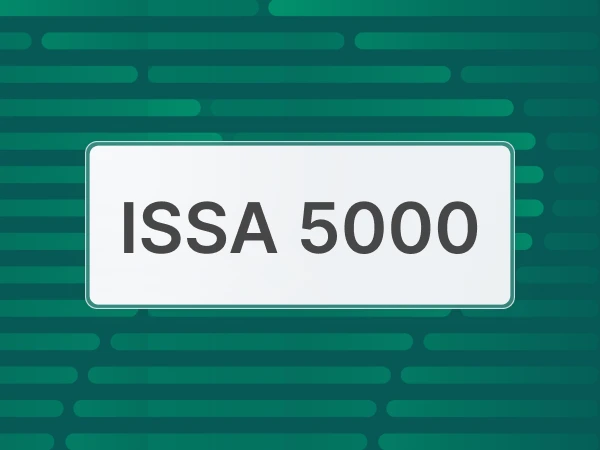Carbon credit market: how it works and why it interests companies
The growth of the carbon credit market
The carbon credit market has expanded significantly in recent years, becoming four times larger from 2020 to the present, and is expected to grow further, reaching a value of about $2.4 billion by 2027.
For this reason, it is important to know how the carbon market works, what types of projects can be financed, and how a decarbonization pathway takes place.
Carbon credits: what they are and why they are important
To understand carbon offsetting, it is first necessary to understand what we mean by the term "carbon credits" (or carbon credits).As we know, every activity performed by humans produces a greater or lesser amount of emissions, and the sum total of all emissions from these activities constitutes what we call a "carbon footprint," or carbon footprint, a parameter used globally to estimate and quantify the climate-altering gases linked to products, services, companies, events, or more simply to an individual.
Carbon offsetting can be defined as an activity inverse to greenhouse gas emissions, aimed at climate mitigation, in that it allows organizations or individuals to offset their emissions. For this purpose, projects are financed that aim to reduce or capture greenhouse gas emissions, for example, through the protection of forests or the installation of renewable energy production facilities in particularly disadvantaged regions.
The goal is to balance one 's carbon dioxide emissions, reducing one's impact on climate change, or even offsetting more emissions than one has produced. At this point we can clearly understand what carbon credits are.
They can be defined as an instrument that attests to the capture or non-emission of CO₂ through environmental protection projects, which were created for the sole purpose of offsetting or reducing CO₂ emissions. Specifically, each carbon credit corresponds to one ton ofCO2 equivalent offset.
How does the carbon market work?
There are two types ofCO2 markets, and only one can be used for offset activities that can mitigate its climate impact. The two markets are:
- the compliance market;
- the voluntary market.
Compliance market: what it consists of
The compliance market is a mandatory market that regulates certain companies operating in specific sectors by setting them a cap on the emissions they are allowed to emit. This system is called "cap and trade," and it requires that each year the threshold of emissions that the company is allowed to emit decreases, so as to encourage a gradual and increasingly virtuous reduction of emissions over time.
Should the company exceed the set cap, it is required to purchase emission allowances from other companies or participate in special auctions. Companies covered by this scheme are responsible for about 45 percent of total emissions in the entire European Union and cover aviation, fossil fuel combustion plants, and emission-intensive industries.
The certificates that certify emissions are called EUAs (Emission Unit Allowances), and each individual EUA represents an emission allowance equal to 1 ton ofCO2. For example, if a coal company produces fewer emissions than the maximum amount it is allocated (cap), the difference is translated into emission allowances, which the company can sell or keep for future use (trade).

The voluntary market for carbon credits
While companies operating in certain sectors are required to comply with emission limits, it is also possible to offset their emissions voluntarily, thereby mitigating their impact on climate change. This is referred to as a "voluntarycarbon market," in which organizations can freely purchase carbon credits that represent an equivalent reduction/removal of their emissions.
Tohelp you better understand these concepts and to explain in detail how offsetting works, we have produced a comprehensive guide to understanding the tools of decarbonization. Click the link below and download it for free!
Download the free white paper
But how much does a carbon credit cost?
Within voluntary carbon markets, no fixed upstream price is set, but this depends on the meeting of supply and demand. Thus, the price of a carbon credit (1 ton ofCO2 eq) can vary widely, based on various factors (including: the quality of the projects generating the credits, the type of projects, the volumes purchased, etc.).
According to projections by leading international organizations (e.g., IEA, International Energy Agency) and major banks and consulting firms that have addressed the issue, the price of carbon credits is likely to rise significantly in the medium to long term.
This is because an increasing number of companies are setting goals for carbon neutrality and reduction of carbon emissions (demand), but on the other hand, carbon capture projects take a long time and require substantial resources to implement (supply).
Many companies often try to offset their emissions by purchasing carbon credits with the lowest prices on the market, thinking that buying more will make a greater reduction in their environmental impact on the planet. This is not necessarily true: in order to carry out an effective reduction and offsetting pathway, it is in fact crucial to consider the quality of the projects one chooses to support. Quality that is measured through compliance with certain well-defined requirements.
This is why it is essential to work with partners such as Up2You, which only has projects certified according to the main standards at the global level and, within these, makes a careful selection through rating methodologies of individual projects. This is to ensure the highest level of quality for the client at each step.
Why rely on certified environmental projects?
There are international entities in charge of verifying that a project meets certain requirements. This ensures that the offsetting obtained from the carbon credits generated through these projects is transparent and of high quality, and that a certain amount of CO₂ is actually captured or avoided.
The most widely used standard globally is Verra's Verified Carbon Standard (VCS). This sets out the rules and requirements that all offset projects must follow in order to be certified. The past 10 years have seen +1,000% of carbon credits retired. VCS makes up 60 percent of this.
The certification process for a project requires that it be audited by third parties, periodically issued documentation attesting to the amount of CO₂ actually captured or not emitted, and technical reports providing an update on the progress of the project in question.
So how does one choose an offsetting project? What can a company do to begin a decarbonization journey?
If you want to start your own path to environmental sustainability but don't know where to start, or if you simply want to learn more about these topics, fill out the form below to get the complete guide where you will find all the tools companies use to achieve carbon neutrality.




























